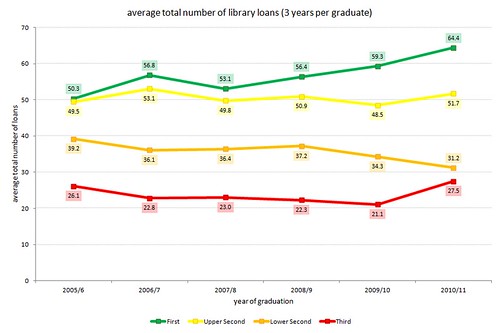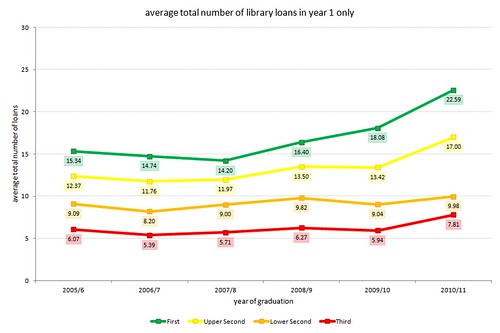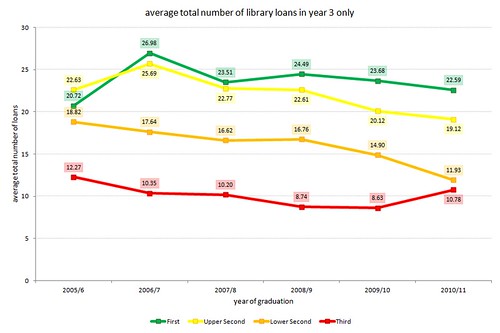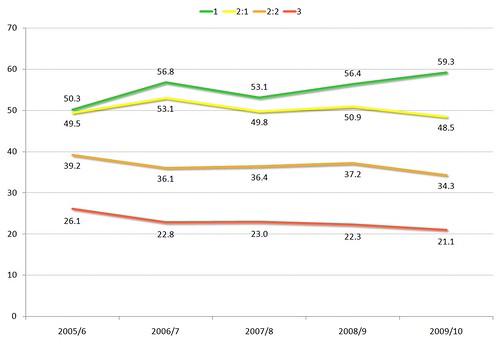If you’ve seen Graham or myself presenting recently about the LIDP, you’ve probably seen this graph (described here)…

The graph shows 5 years of graduating students (2005/6 thru to 2009/10, with approx 3,000 graduates per year) and the average number of books they borrowed. So, “2005/6” shows the average number of books borrowed by the 2005/6 graduates
Quite early on during our data analysis, I noticed that the correlation in book borrowing seemed to be there from day one for students — in other words, students who eventually get the highest grades borrow more in their first year of study than those who eventually get lower grades.
So, here’s a year by year breakdown of the above graph, where “year 3” is the year the student graduated in…
borrowing in year one only

I’m actually quite surprised how clear the gaps are between each grade, even though we’re not talking about large numbers of loans.
borrowing in year two only

The borrowing by students who go on to get a first is fairly similar in the second year, as is the borrowing by those who’ll get a third. However, the borrowing by 2:1 students increases to a similar level to firsts (although you can see in 2009/10, second year borrowing by the firsts is breaking away).
borrowing in year three only

In the final year of studies, we see a marked increase in borrowing (no surprises there!). As with the original graph, we can see that 2:2s and thirds are showing a declining trend in borrowing.
In many of the data sets we’ve looked at in this project, we’ve seen similar(ish) borrowing levels for firsts and 2:1s. At most, in 2009/10, the gap in average borrowing is only 4 books. However, it does look like borrowing by 2:1s in their final year of study is also showing a declining trend.










